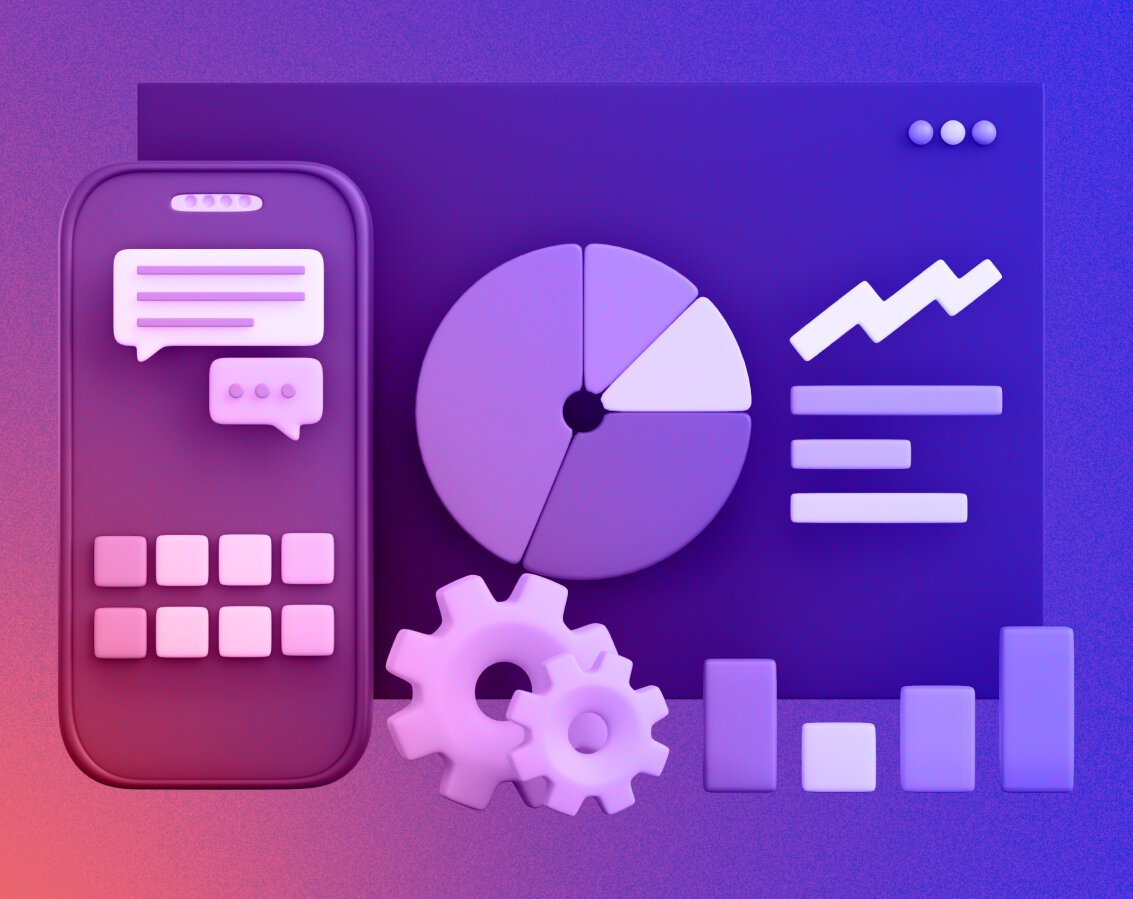blog
Navigating Sales Success with a Meticulous Sales Enablement Framework
By Mohan S Business Software development App development Enterprise Mobility November 26, 2023

In the swiftly evolving world of sales today, the idea of sales enablement apps that empower your sales team have become essential to success. The strategic approach of providing sales teams with the tools, resources, and information they need to improve their productivity, efficiency, and effectiveness in turning leads into customers is known as sales enablement.
One cannot stress the importance of sales enablement enough. It acts as the keystone that ties marketing initiatives together, equips salespeople with the necessary skills and resources, and eventually boosts revenue. Its function goes beyond simple assistance; it's a dynamic approach that promotes sales and marketing synergy, improves customer engagement, and streamlines the sales process as a whole.
The goal of this blog is to offer a thorough framework for putting into practice successful sales enablement tactics. We'll explore best practices, a methodical approach, and practical insights to assist companies in creating and refining their sales enablement programs. For businesses looking to use sales enablement to boost sales, this guide will act as a road map, covering everything from setting clear goals to choosing the best resources and iteratively improving procedures.
Understanding Sales Enablement
A comprehensive strategy known as "sales enablement" equips sales teams with the knowledge, instruments, and resources they need to effectively engage prospects and close deals. The fundamental goal of sales enablement is to smoothly coordinate marketing and sales initiatives.
In the modern business environment, reaching organizational objectives depends on sales and marketing being in sync. By serving as a liaison between these two crucial divisions, sales enablement guarantees that the marketing team's messaging, content, and tactics are successfully applied by the sales force.
Sales enablement makes sure that sales reps have access to the most recent and pertinent content by coordinating marketing and sales initiatives. This also promotes messaging consistency. This alignment improves customer engagement, lowers team conflict, expedites the sales process, and eventually boosts revenue.
We'll go into more detail on practical strategies and best practices in the sections that follow, all aimed at building a thorough framework for sales enablement that increases revenue generation and organizational effectiveness.
How to Create a Sales Enablement Framework:
A number of strategic stages and actions are involved in creating an efficient sales enablement framework. A methodical approach is needed to guarantee that sales teams have the resources, tools, and direction they need to reach their full potential.
Here's an overview of the key stages involved:
1. Assess the Current State and Define Objectives:
Start by assessing the current sales procedure, identifying problems, and establishing precise goals for the sales enablement program. In this step, the sales team's current procedures, tools, and content are analyzed.
2. Alignment of Sales and Marketing:
Create a solid foundation of cooperation and coordination between the marketing and sales departments. Creating a common understanding of the needs of the customer, defining buyer personas, and producing content and messaging that are consistent are all part of this process.
3. Content Development and Optimization:
Provide and select excellent content that is related to the various phases of the buyer's journey. Make sure the content offers value, tackles customer pain points, and complements the sales strategy.
4. Training and Enablement Programs:
Provide thorough training programs with an emphasis on customer interaction skills, sales tactics, product knowledge, and the use of sales tools. Constant training keeps the sales force current and focused on the objectives of the company.
5. Technology Integration:
Use technology and tools for sales enablement that will help with content management, analytics, CRM integration, and sales communication. These tools improve productivity and make it possible to track sales activity more effectively.
Through the integration of these stages and steps, companies can establish a strong framework for sales enablement that boosts departmental collaboration, empowers sales teams, increases sales effectiveness, and propels overall business expansion. This methodical approach guarantees a unified and expandable structure that is customized to satisfy the distinct requirements of the company's sales ecosystem.
Implementing Sales Enablement Technology
The effectiveness and efficiency of sales enablement initiatives are greatly impacted by the choice of sales enablement tools and technology, so choosing wisely is essential. The right technology for frontline workers increases productivity, fosters better teamwork, and boosts overall sales results. This is why it's critical to select the appropriate sales enablement technology
1. Enhanced Efficiency and Productivity:
Sales teams can easily access relevant content, automate repetitive tasks, and streamline workflows with the help of the right technology. Sales representatives can now concentrate more on interacting with prospects and closing deals, thanks to this efficiency boost.
2. Improved Content Management and Accessibility:
With the help of sales enablement tools, sales collateral can be easily accessed and centrally stored, giving representatives instant access to the most recent and pertinent information when interacting with customers.
3. Data-Driven Insights:
Analytics features that offer useful insights into sales performance, customer engagement, and content effectiveness are frequently included in sales enablement technologies. These insights support well-informed decision-making for the best possible sales strategy.
Types of Sales Enablement Tools:
Various tools created to support various elements of the sales process are included in sales enablement technology.
CRM (Customer Relationship Management) systems
Sales Content Management platforms
Sales Analytics software
Communication and Collaboration tools
Sales Automation software
Mobile Sales Apps
Choosing the Right Sales Enablement Technology:
Choosing the best sales enablement technology requires taking a number of factors into account. It places emphasis on elements like ease of use, analytics features, scalability, and alignment with particular business needs.
Businesses should choose the appropriate technology by:
Identifying specific pain points and objectives
Assessing compatibility and integration with existing systems
Considering user-friendliness and training requirements
Evaluating vendor support and future scalability
Seeking solutions that align with the organization's budget and long-term goals
Conclusion
In conclusion, modern companies looking to boost sales success and revenue growth must have a well-structured sales enablement framework in place. Through the coordination of marketing and sales initiatives, the provision of suitable resources and training, and utilization of suitable technology, companies can enable their sales teams to achieve optimal performance.
This framework is significant because it can improve teamwork, simplify procedures, and give salespeople the resources and know-how they need to interact with clients and prospects. It encourages a customer-focused strategy, guaranteeing a smooth and effective sales process.
Businesses must modify their sales enablement strategies in response to the ever-changing sales landscape. Organizations can remain adaptable and responsive to changing consumer demands and emerging trends by proactively requesting feedback, keeping an eye on market developments, and embracing innovation. This continuous process necessitates a dedication to learning from experiences, honing techniques, and improving continuously.




